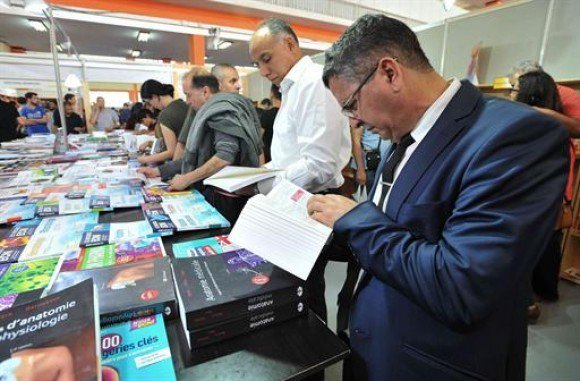
Algerian Literature – Part 1
Algerian literature has been influenced by many cultures, including the ancient Romans, Arabs, French, Spanish, and Berbers. The dominant languages in Algerian literature are French, Arabic, and Berber.
Although there is a long tradition of written work in Algeria – from the fourth century work of Saint Augustine, in Latin to the nineteenth century theological writings of Abdel-Kader, in Arabic – the novel only arrived with the French.
Previous to this, fiction had been expressed as poetry and oral storytelling but by the beginning of the twentieth century, Algerian writers began producing long fiction. Initially this work was written very much in the French style for a French audience, but a powerful and often extremely political Algerian voice soon developed. This work considered major issues of Algerian history and independence, Berber cultural identity, the place of Islam in Algerian society and the conflict of the 1990s.
Algerian literature in French and Arabic now constitutes a very rich body of work in world literature, but unfortunately comparatively little has been translated into English.
From the beginning of the twentieth century, novels written in French began to appear by a French-educated Algerian elite. These typically reflected the negative view of the indigenous population that was dominant among French colonisers and idealised the French occupation of Algeria; occasionally they were even coauthored with French writers.
More realistic novels were initially rejected by French publishers; Mouloud Feraoun wrote the semi-autobiographical Le Fils du pauvre (the son of the poor man) in 1939 which was not published until 1950. It tells the story of a family from a small village in the Berber province of Kabylia where life is extremely hard and there are no visible signs of the French ‘civilising mission’ despite more than a century of French presence. Eventually the father of the family leaves to find work in France, as Feroun’s father did and as was the case for a growing number of Kabyle men from the 1920s onwards. Feroun’s second novel, La Terre et le sang (earth and blood) published in 1953, further explored the experience of emigrating to France. A number of other novels of the period also dealt with emigration, such as La Colline oubliée (the forgotten hill), written by Feroun’s friend Mouloud Mammeri in 1952. La Colline oubliée was made into a film, directed by Abderrahmane Bouguermouh, in 1995.
Mohammed Dib, one of the most prolific Algerian writers, published the first volume of his ‘Algeria’ trilogy in 1952, La Grande Maison (the large house), followed by L’Incendie (the fire) (1954) and Le Métier à tisser (the loom) (1957). These books present a picture of the highly exploitative relationship between the colonisers and the local population in the region of Tlemcen. The books are ostensibly set around the beginning of the Second World War but critics have demonstrated that the events relate to a strike by agricultural workers that Dib covered for a national paper in 1951. The events of the strike are dealt with in L’Incendie, which was published a few months before the beginning of the 1954-62 war.
Nedjma, by Kateb Yacine (1956) is another powerfully nationalist novel. Nedjma also considers revolt against the colonial presence in a similar way to Dib’s trilogy but Kateb also rebelled against the French form of the novel, introducing a number of striking stylistic innovations, such as breaking up the accepted chronological pattern of story telling. Because of this dramatic departure from French tradition, Nedjma is widely considered to mark the beginning of a new wave of Algerian writing and established Kateb as one of the most respected Algerian writers. Assia Djebar is another very highly respected writer who began writing during this period with La Soif (the thirst) in 1957 and Les Impatients (impatient people) the following year.
Djebar was interested in the position of women in Algeria immediately before the 1954-62 war. Her heroines were educated women who reflect on their situation and their relationship with French women and she was keen to show that education is the route to the emancipation of women.
It is, of course, difficult to do justice to Algerian literature in a few paragraphs, and new work is continuously being published.
Many people consider that a second wave of literary style was launched with the publication of La Répudiation (the repudiation) by Rachid Boudjedra (1969), which focused on the place of
Islam in Algerian society. The literature d’urgence provoked by the 1990s conflict was undoubtedly another new development. A number of writers, such as Kateb and Boudjedra, began to write in Arabic, while other significant Algerian writers, such as Tahar Ouettar, write exclusively in Arabic.
Finally, there is the very significant contribution from pieds noirs writers, most famously Albert Camus but also Jean Senac, who chose Algerian nationality on independence rather than returning to France. He was killed soon after independence. Mouloud Feraoun was also murdered by departing pieds noirs following independence.
These are further reminders how political the act of writing so often is in Algeria and an unpleasant avatar of threats and attacks on writers in time of conflicts.
To be continued …
